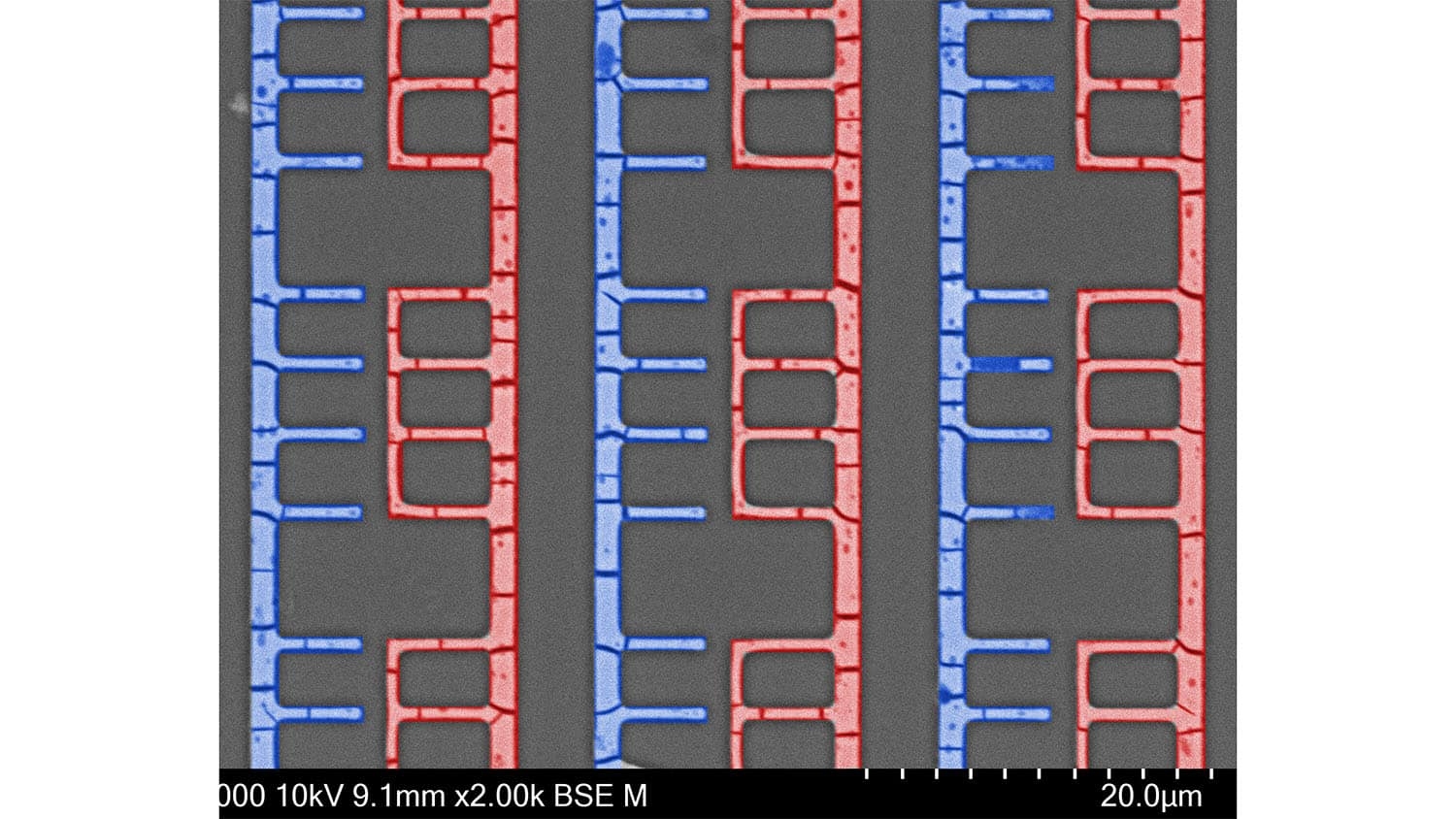Researchers Demonstrate Self-Assembling Electronics

For Immediate Release
Researchers have demonstrated a new technique for self-assembling electronic devices. The proof-of-concept work was used to create diodes and transistors, and paves the way for self-assembling more complex electronic devices without relying on existing computer chip manufacturing techniques.
“Existing chip manufacturing techniques involve many steps and rely on extremely complex technologies, making the process costly and time consuming,” says Martin Thuo, corresponding author of a paper on the work and a professor of materials science and engineering at North Carolina State University. “Our self-assembling approach is significantly faster and less expensive. We’ve also demonstrated that we can use the process to tune the bandgap for semiconductor materials and to make the materials responsive to light – meaning this technique can be used to create optoelectronic devices.
“What’s more, current manufacturing techniques have low yield, meaning they produce a relatively large number of faulty chips that can’t be used. Our approach is high yield – meaning you get more consistent production of arrays and less waste.”
Thuo calls the new, self-assembling technique a directed metal-ligand (D-Met) reaction. Here’s how it works.
You start with liquid metal particles. For their proof-of-concept work, the researchers used Field’s metal, which is an alloy of indium, bismuth and tin. The liquid metal particles are placed next to a mold, which can be made to any size or pattern. A solution is then poured onto the liquid metal. The solution contains molecules called ligands that are made up of carbon and oxygen. These ligands harvest ions from the surface of the liquid metal and hold those ions in a specific geometric pattern. The solution flows across the liquid metal particles and is drawn into the mold.
As the solution flows into the mold, the ion-bearing ligands begin assembling themselves into more complex, three-dimensional structures. Meanwhile, the liquid part of the solution begins to evaporate, which serves to pack the complex structures closer and closer together into an array.
“Without the mold, these structures can form somewhat chaotic patterns,” Thuo says. “But because the solution is constrained by the mold, the structures form in predictable, symmetrical arrays.”
Once a structure has reached the desired size, the mold is removed, and the array is heated. This heat breaks up the ligands, freeing the carbon and oxygen atoms. The metal ions interact with the oxygen to form semiconductor metal oxides, while the carbon atoms form graphene sheets. These ingredients assemble themselves into a well-ordered structure consisting of semiconductor metal oxide molecules wrapped in graphene sheets. The researchers used this technique to create nanoscale and microscale transistors and diodes.
“The graphene sheets can be used to tune the bandgap of the semiconductors, making the semiconductor more or less responsive, depending on the quality of the graphene,” says Julia Chang, first author of the paper and a postdoctoral researcher at NC State.
In addition, because the researchers used bismuth in the proof-of-concept work, they were able to make structures that are photo-responsive. This allows the researchers to manipulate the properties of the semiconductors using light.
“The nature of the D-Met technique means you can make these materials on a large scale – you’re only limited by the size of the mold you use,” Thuo says. “You can also control the semiconductor structures by manipulating the type of liquid used in the solution, the dimensions of the mold, and the rate of evaporation for the solution.
“In short, we’ve shown that we can self-assemble highly structured, highly tunable electronic materials for use in functional electronic devices,” Thuo says. “This work demonstrated the creation of transistors and diodes. The next step is to use this technique to make more complex devices, such as three-dimensional chips.”
The paper, “Guided Ad infinitum Assembly of Mixed-Metal Oxide Arrays from Liquid Metal,” is published open access in the journal Materials Horizons. First author of the paper is Julia Chang, a postdoctoral researcher at NC State. The paper was co-authored by Andrew Martin, a postdoctoral researcher at NC State; Alana Pauls and Dhanush Jamadgni, Ph.D. students at NC State; and by Chuanshen Du, Le Wei, Thomas Ward and Meng Lu of Iowa State University.
Chang, Martin and Thuo are pursuing a patent related to the D-Met research. Chang, Ward and Du have a separate patent pending that is related to the D-Met research.
The work was done with support from the National Science Foundation Center for Complex Particle Systems under grant 2243104.
-shipman-
Note to Editors: The study abstract follows.
“Guided Ad infinitum Assembly of Mixed-Metal Oxide Arrays from Liquid Metal”
Authors: Julia J. Chang, Dhanush Jamadgni, Alana Pauls, Andrew Martin and Martin M. Thuo, North Carolina State University; Chuanshen Du, Le Wei, Thomas Ward and Meng Lu, Iowa State University
Published: Nov. 25, Materials Horizons
DOI: 10.1039/D4MH01177E
Abstract: Bottom-up nano- to micro-fabrication is crucial in modern electronics and optics. Conventional multi-scale array fabrication techniques, however, are facing challenges in reconciling the contradiction between pursuit of better device performance while lowering fabrication cost and/or energy consumption. Here we introduce a facile mixed-metal array fabrication method based on guided self-assembly of polymerizing organometallic adducts derived from the passivating oxides of a ternary liquid metal to create mixed metal wires. Driven by capillary action and evaporation-driven Marangoni convections, large-area, high-quality organometallic nano- to micro-wire arrays were fabricated. Calcination converts the organometallics into oxides (semiconductors) without compromising wire continuity or array periodicity. Exploiting capillary bridges on a preceding layer, hierarchical arrays were made. Similarly, exploiting the conformity of the liquid to the mold, arrays with complex geometries were made. Given the periodicity and high refractive index of these arrays we observe guided mode resonance while their complex band structures enable fabrication of diodes or gates. This work demonstrates a simple, affordable approach to opto-electronics based on self-assembling arrays.
This post was originally published in NC State News.


